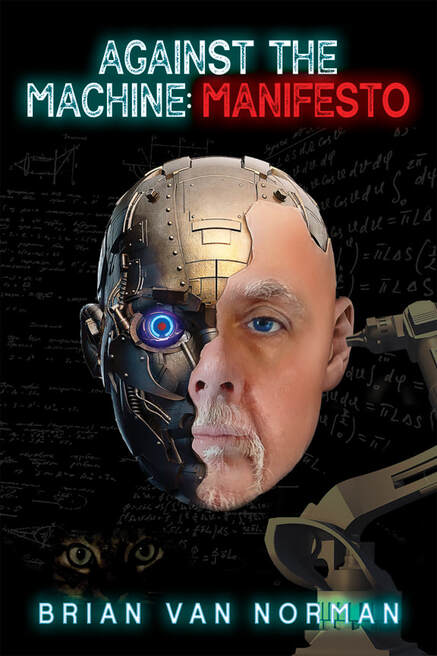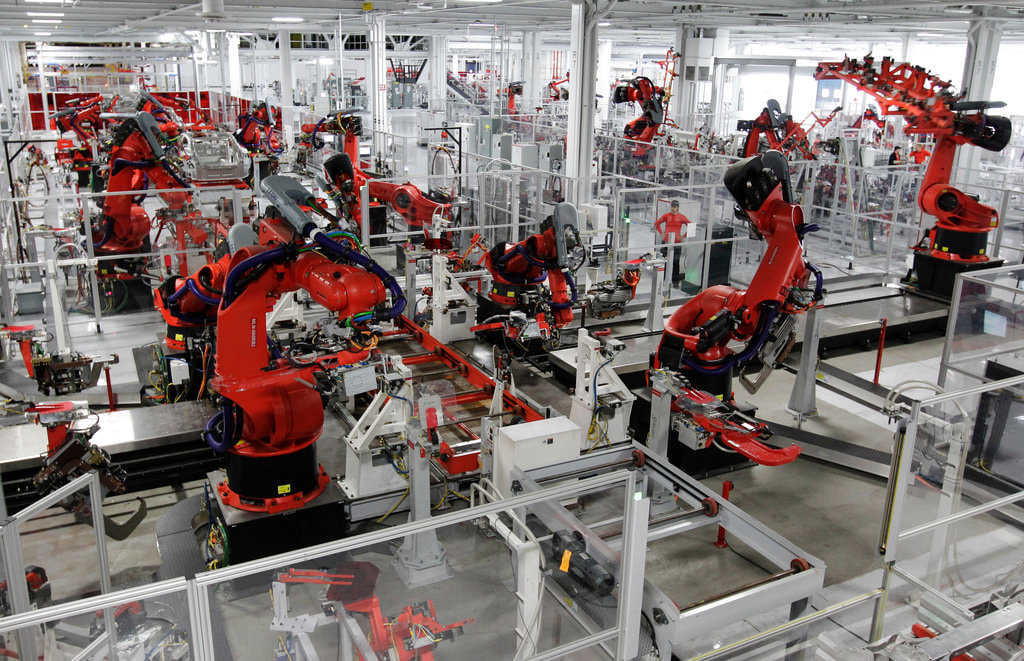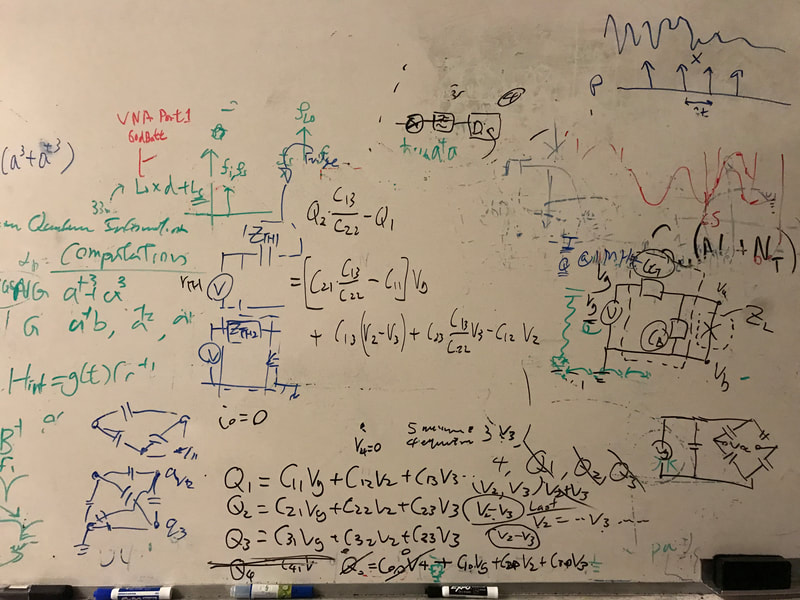"a fascinating study of why mankind needs to remain in control of his own designs."

Mel Buckworth, dependable family man, loses his manufacturing job through recession. Having lost his sense of purpose his pride sidelines him as he discerns his lack of digital skills so apparent in his children’s generation. He is galled by his daughter Dani’s university friend, Stanley Best, who is about to achieve fame in the fields of nano technology and artificial intelligence. As Mel desperately attempts to find equilibrium he estranges his family, leaves his wife and enlists the help of a greedy grad student. Will Baker teaches Mel the skills he will need to wreak revenge on a system seemingly discarding him. As his aptitudes grow he begins to use the internet, the very thing he despised, as a weapon to inflict his reprisals. Slowly he turns terrorist to deliver his message: that humans will succumb to machines and the social system controlling them. As his acts grow more lethal, Mel knows he must make an indelible declaration. A “manifesto” to be remembered.
AVAILABLE IN CANADA AT:
https://guernicaeditions.com/products/against-the-machine-2
https://www.amazon.ca/Against-Machine-Brian-Van-Norman/dp/1771836954/ref=sr_1_1?crid=1E1LFHOVQ1LXA&dib=eyJ2IjoiMSJ9._O7aSDcH6lV8HpmI7crolnxz4Kw5ODjwxprC9C-sRumT97p8derdrCVdJgpigMPTRm0L90y5FzAP8KS8jiIsCCx9U248W6aJmqx5c8x58NIKiO0y09Zf7v7k0_DoNFkFVDtZOj5JQTMUyxBJiEzv9EZGR5EFJC_1qve2uXJayA2yaGkyzcBFw_efT_0FqCl2.wcSCrag6WLk-J0iXcyU5Lpcen08VkjFjSeI3zDmAJXo&dib_tag=se&keywords=aGAINST+the+machine%3A+manifesto&qid=1715270897&s=books&sprefix=against+the+machine+manifesto%2Cstripbooks%2C103&sr=1-1
AVAILABLE IN THE USA AT:
https://www.barnesandnoble.com/w/against-the-machine-brian-norman/1138519531?ean=9781771836951
https://www.amazon.com/Against-Machine-Manifesto-Essential-Prose-ebook/dp/B09P4921WW/ref=sr_1_1?crid=2KWWWZ12DAH2O&dib=eyJ2IjoiMSJ9.EGJ5OSiQuZNqlCDWdsjGoD5bWIo3YslYNIGa7ajXAW3mQ1BbnOZHE-yFFRQZEVn6MhKEeb523IyhheMGyL3YfGrtSMFHTIsM6-WyrCnsbEMmfZgazCLTmD0K8by6fbLoz0TVmqTkWQcmFMeI8zgX2w.GX42p6Z_TqlFrSZSSQOUdLSH4oNdn-UERjeYXBpmBjo&dib_tag=se&keywords=AGAINST+THE+MACHINE%3A+MANIFESTO&qid=1715271042&s=books&sprefix=against+the+machine+manifesto%2Cstripbooks%2C138&sr=1-1
AVAILABLE IN THE UK AT:
https://www.waterstones.com/book/against-the-machine/brian-van-norman/9781771836371
https://www.amazon.co.uk/Against-Machine-Manifesto-Essential-Prose-ebook/dp/B09P4921WW/ref=sr_1_1?crid=K1R4XCYGW9YY&dib=eyJ2IjoiMSJ9.lX_jsXSO8YHpgObNx06xcQKRsuFRm3pAmbVtWWajxlk.40dB1U0FS7Cq6Rvx4NkQmMbOIFumL-_I6crdStwlLqY&dib_tag=se&keywords=aGAINST+THE+MACHINE%3A+MANIFESTO&qid=1715271206&s=books&sprefix=against+the+machine+manifesto%2Cstripbooks%2C156&sr=1-1
https://guernicaeditions.com/products/against-the-machine-2
https://www.amazon.ca/Against-Machine-Brian-Van-Norman/dp/1771836954/ref=sr_1_1?crid=1E1LFHOVQ1LXA&dib=eyJ2IjoiMSJ9._O7aSDcH6lV8HpmI7crolnxz4Kw5ODjwxprC9C-sRumT97p8derdrCVdJgpigMPTRm0L90y5FzAP8KS8jiIsCCx9U248W6aJmqx5c8x58NIKiO0y09Zf7v7k0_DoNFkFVDtZOj5JQTMUyxBJiEzv9EZGR5EFJC_1qve2uXJayA2yaGkyzcBFw_efT_0FqCl2.wcSCrag6WLk-J0iXcyU5Lpcen08VkjFjSeI3zDmAJXo&dib_tag=se&keywords=aGAINST+the+machine%3A+manifesto&qid=1715270897&s=books&sprefix=against+the+machine+manifesto%2Cstripbooks%2C103&sr=1-1
AVAILABLE IN THE USA AT:
https://www.barnesandnoble.com/w/against-the-machine-brian-norman/1138519531?ean=9781771836951
https://www.amazon.com/Against-Machine-Manifesto-Essential-Prose-ebook/dp/B09P4921WW/ref=sr_1_1?crid=2KWWWZ12DAH2O&dib=eyJ2IjoiMSJ9.EGJ5OSiQuZNqlCDWdsjGoD5bWIo3YslYNIGa7ajXAW3mQ1BbnOZHE-yFFRQZEVn6MhKEeb523IyhheMGyL3YfGrtSMFHTIsM6-WyrCnsbEMmfZgazCLTmD0K8by6fbLoz0TVmqTkWQcmFMeI8zgX2w.GX42p6Z_TqlFrSZSSQOUdLSH4oNdn-UERjeYXBpmBjo&dib_tag=se&keywords=AGAINST+THE+MACHINE%3A+MANIFESTO&qid=1715271042&s=books&sprefix=against+the+machine+manifesto%2Cstripbooks%2C138&sr=1-1
AVAILABLE IN THE UK AT:
https://www.waterstones.com/book/against-the-machine/brian-van-norman/9781771836371
https://www.amazon.co.uk/Against-Machine-Manifesto-Essential-Prose-ebook/dp/B09P4921WW/ref=sr_1_1?crid=K1R4XCYGW9YY&dib=eyJ2IjoiMSJ9.lX_jsXSO8YHpgObNx06xcQKRsuFRm3pAmbVtWWajxlk.40dB1U0FS7Cq6Rvx4NkQmMbOIFumL-_I6crdStwlLqY&dib_tag=se&keywords=aGAINST+THE+MACHINE%3A+MANIFESTO&qid=1715271206&s=books&sprefix=against+the+machine+manifesto%2Cstripbooks%2C156&sr=1-1
Reviews for "Against the Machine: Manifesto"
Quick Reviews from Goodreads:
James D. A. Terry Author
Against the Machine: Luddites and Against the Machine Manifesto, when read together, forge a compelling magnum opus of quantum entanglement not only providing the historical support for each other but presenting a disturbing portrait of the human condition.
Nat Ward: Brilliant story! It is a delightful story that I loved reading. I really was hooked on this book from beginning to end. I highly recommend this story to everyone.
Madalyn Dickinson: Unquestionably dazzling story! Couldn't put this book down from start to finish. Unexpected twists and turns throughout which will keep you hooked!
Chaim Toy: What a page turner! Unequivocally kept me on the edge of my seat! Can't wait for Van Norman's next book!
Russ Howe: This story was such a stunningly written story with characters that were created with enough depth and detail that they made me feel like I was standing in the same room with them as the story unfolded as the pages were turned to the very end!
Daniel Rhodes, The Book Commentary
"a veritable spellbinder, infused with realism and humanity."
Against the Machine: Manifesto (194) (Essential Prose Series) by Brian Van Norman follows Mel Buckworth who is hit hard by the recession and loses his job. Things could be different if he had honed his skills in digital technology. Deeply hurt and holding onto his pride, Mel can’t stand to see young minds like Stanley Best, his daughter’s university friend, excelling in nanotechnology.
Leaving his wife and family, he seeks the help of an unscrupulous grad student, Will Baker, who teaches him skills he will need in order to exact revenge on a system that has thrown him out. Obsessed with revenge and the power of the internet, the appalling truth begins to sink in: humans are slowly being ruled by machines. Mel is determined to leave a legacy and decides to do so in the form of a Manifesto. As his power grows, will anything stop him?
This is an intelligently written story that brilliantly showcases how machines take control of human beings and define their interests and social values. The author creates characters that are sophisticated, multilayered, and believable and thrusts them into realities that strongly resonate with contemporary readers. Readers are forced to interrogate themselves about the line separating their humanity from the digital environment in which they are trapped.
It is hard to read this story without pausing to think about the hold that technology has on us. The writing is gorgeous and crisp, and Van Norman’s descriptions are fascinating and detailed.
One of the outstanding elements that elevate the beauty of this tale is the intelligent manner in which the author writes motivation into his characters. Mel is a compelling character, a man with a strong sense of pride. But he is also a broken man. While he seeks to redefine his purpose, he also has a debilitating sense of revenge. Against the Machine: Manifesto (194) (Essential Prose Series) features real characters that readers will care about; it is fast-paced and the author’s exploration of the psyche of the characters makes it even easier for readers to connect to them.
The cultural setting of the story is rich, immersing readers into a world they navigate daily; the novel is so richly developed and skillfully written to make it impossible for readers to put it down without looking seriously at their own lives and how digital technology affects them. It is a veritable spellbinder, infused with realism and humanity.
David Menear, author of Swallows Playing Chicken
"A complex and vibrant world of science, pizza, sex and revolution."
Van Norman's ‘Manifesto’ is so richly dense and detailed with all of the descriptions so vivid that we are unwittingly taken outside of ourselves and magically transported to a different time and place. A complex and vibrant world of science, pizza, sex and revolution. ‘Manifesto’ xray’s the broken bones of the past and aims a powerful telescope at what’s to come. If this is the work of a wonderful writer...Van Norman is definitely doing his job. Find here, in the pages of ‘Manifesto’ the struggle of man against machine against man. The past raging against the present will surely define the future. You’re invited.
John Oughton, author of Higher Teaching
"questions about the nature of work, the effects of our wired world on the human psyche, and the ways in which people both love and hurt each other."
In Against the Machine: Manifesto, Brian Van Norman interlaces some unexpected threads. Updating the story of the original Luddite, a weaver who led others in smashing the new power looms taking their jobs, Van Norman introduces us to a dysfunctional family in Waterloo, Ontario. His protagonist Mel Buckworth loses his long-time industrial job, while the "winners" seem to be those at the local university riding the new cybernetics waves of AI, the Dark Web, and big data. Van Norman portrays how Mel, a jock who still plays amateur hockey and doesn't like to overthink things, gradually turns his focus to updating the legacy of the Unabomber.You end up both caring for Mel and his fractured family, and hoping that he doesn'tsucceed in his "against the machine" statement. Along the way, Van Norman raises questions about the nature of work, the effects of our wired world on the human psyche, and the ways in which people both love and hurt each other. Well worth reading.
Nancy Silcox, Waterloo author/journalist
"An inspired concept..."
An inspired concept by author Brian Van Norman. Take his fascinating and insightful study of the Luddite movement of 19th century England: Against the Machine: Luddites, then relocate the revolution to contemporary Canada in his sequel Against the Machine: Manifesto. Computers against the common man. A battle for survival.
Bruce Meyer, author of Grace of Falling Stars
"a fascinating study of why mankind needs to remain in control of his own designs."
In the second book by Van Norman (and one hopes this will be a trilogy) the battle of man against machine is played out in Waterloo County near Toronto where Mel Buckworth, a modern-day Everyman with whom readers can identify, is replaced by the onslaught of technology. In a conversational narrative, the reader is given a powerful sense of insight into the reasons why humanity is challenged by machines and why it is imperative that human beings remain masters of their own creations. This book is a fascinating study of why mankind needs to remain in control of his own designs.
James Terry, author and moderator of “The Reading Room”
"a tour de force exceedingly well crafted and exhibiting an astonishing insight into the intricacies of people’s minds and human nature."
Against the Machine: Manifesto is, without a doubt, the single most powerful historical novel I’ve ever had the distinct privilege to read … Van Norman’s diligence and dedication to detail has created a tour de force exceedingly well crafted and exhibiting an astonishing insight into the intricacies of people’s minds and human nature … a tapestry of intrigue and subterfuge woven into the fabric of conflict between the classes and stitched together with the threads of love, passion and courage.
Against the Machine: Manifesto by Brian Van Norman
by Lisa Timpf, Miramichi Reader
"readers are kept wondering what Mel will plan next and whether his machinations will come to fruition."
When long-time employee Mel “Bucks” Buckworth loses his job due to a plant closure, he is, understandably, upset. It seems as though 28 years of faithful service ought to count for more. A star athlete throughout his youth, Mel emphasized sports over schoolwork. When he didn’t make it to the pros, a job at the local wire-weaving plant seemed like a solid option. Factory work, yes, but it provided an income. Besides, Mel had his family and his competitive sporting activities to keep him occupied in his free time.
Now, forced to re-assess his life in the light of his job loss, Mel realizes that nothing is the way it once was. He’s hard-pressed to keep up with the younger players in the elite hockey league he takes pride in belonging to. Mel and his wife Patricia have drifted apart, and Mel is on the outs with his daughter, Danielle, because he thinks she’s too young to move in with her boyfriend. Mel’s son MJ, who Mel once hoped would make it as a professional athlete, now spends his free time playing video games in the basement when he’s not at his pizza delivery job.
“Embittered by the turns his life has taken, Mel channels his anger by striking back against technology.”
Embittered by the turns his life has taken, Mel channels his anger by striking back against technology, which he blames for the plant closure. Mel sees mechanization as a threat that needs to be countered at all costs. At one point, he remarks to another character, “You talk about machines learning to serve us . . . but what happens when they learn too much, when they know more than us, when they turn on us and make us serve them?
As the novel proceeds, suspense builds as readers are kept wondering what Mel will plan next and whether his machinations will come to fruition.
Though Mel drives a fair portion of the action, he’s not the only character we spend time with. Author Brian Van Norman takes us into the lives of various members of Mel’s family. Also factoring into the story are a police detective and three computer science students at the University of Waterloo.
One of the latter is Stanley Best, who has drawn Mel’s ire by dating Mel’s daughter Danielle. Stanley is a brilliant researcher who is pursuing a Doctor of Philosophy in Computer Science at the University of Waterloo, with a specialization in Artificial Intelligence and Nanotechnology. Though much of his work is purely theoretical, Stanley finds joy in the challenge of learning and expanding the boundaries of what is known.
Stanley’s housemates, Will Baker and Michael Selel, are also in the computer science field, though they harbour different ambitions. Will dreams of striking it big with a new app, while Michael, who hails from Kenya, wants to use technology “to brighten the futures of African youth, bringing them access to the tools they need in order to do as he did, get out and give back.”
One other character, Henry the house cat, is worthy of mention because he steals the show in some places. Henry resides with Stanley and his housemates. The cat “rules the house . . . from various vantage points and even from some invisible ones.” Referred to as “Mister Walk-On-By” by Danielle, who finds his aloofness frustrating, Henry is an entertaining character imbued with a hint of quantum mystery.
Against the Machine: Manifesto is set in Waterloo, Ontario, with the action opening in 2012. The timing is not coincidental, being two centuries after the uprising of the Luddites in England. The Luddite movement sprang up in protest against the mechanization of the textile mills. There are a number of points of connectivity to the Luddites throughout Against the Machine: Manifesto. As examples, Mel himself is a descendant of one of the original Luddite leaders, while Stanley Best’s hometown is Huddersfield, Yorkshire, where “huge textile mills now lie in ruins reclaimed by nature’s vegetation.”
In Against the Machine: Luddites, published in 2020, Van Norman explored the rebellion of the textile workers in an imaginative and highly readable work of historical fiction. Though Against the Machine: Manifesto can be read as a stand-alone work, reading Against the Machine: Luddites first will provide greater depth of understanding and greater resonance for certain events and occurrences in Manifesto.
Both books are interesting and thought-provoking, exploring issues around technology’s impact on society while at the same time offering a suspenseful narrative.
Against the Machine: Manifesto is Van Norman’s fourth novel, joining The Betrayal Path, Immortal Water, and Against the Machine: Luddites.
by Lisa Timpf, Miramichi Reader
"readers are kept wondering what Mel will plan next and whether his machinations will come to fruition."
When long-time employee Mel “Bucks” Buckworth loses his job due to a plant closure, he is, understandably, upset. It seems as though 28 years of faithful service ought to count for more. A star athlete throughout his youth, Mel emphasized sports over schoolwork. When he didn’t make it to the pros, a job at the local wire-weaving plant seemed like a solid option. Factory work, yes, but it provided an income. Besides, Mel had his family and his competitive sporting activities to keep him occupied in his free time.
Now, forced to re-assess his life in the light of his job loss, Mel realizes that nothing is the way it once was. He’s hard-pressed to keep up with the younger players in the elite hockey league he takes pride in belonging to. Mel and his wife Patricia have drifted apart, and Mel is on the outs with his daughter, Danielle, because he thinks she’s too young to move in with her boyfriend. Mel’s son MJ, who Mel once hoped would make it as a professional athlete, now spends his free time playing video games in the basement when he’s not at his pizza delivery job.
“Embittered by the turns his life has taken, Mel channels his anger by striking back against technology.”
Embittered by the turns his life has taken, Mel channels his anger by striking back against technology, which he blames for the plant closure. Mel sees mechanization as a threat that needs to be countered at all costs. At one point, he remarks to another character, “You talk about machines learning to serve us . . . but what happens when they learn too much, when they know more than us, when they turn on us and make us serve them?
As the novel proceeds, suspense builds as readers are kept wondering what Mel will plan next and whether his machinations will come to fruition.
Though Mel drives a fair portion of the action, he’s not the only character we spend time with. Author Brian Van Norman takes us into the lives of various members of Mel’s family. Also factoring into the story are a police detective and three computer science students at the University of Waterloo.
One of the latter is Stanley Best, who has drawn Mel’s ire by dating Mel’s daughter Danielle. Stanley is a brilliant researcher who is pursuing a Doctor of Philosophy in Computer Science at the University of Waterloo, with a specialization in Artificial Intelligence and Nanotechnology. Though much of his work is purely theoretical, Stanley finds joy in the challenge of learning and expanding the boundaries of what is known.
Stanley’s housemates, Will Baker and Michael Selel, are also in the computer science field, though they harbour different ambitions. Will dreams of striking it big with a new app, while Michael, who hails from Kenya, wants to use technology “to brighten the futures of African youth, bringing them access to the tools they need in order to do as he did, get out and give back.”
One other character, Henry the house cat, is worthy of mention because he steals the show in some places. Henry resides with Stanley and his housemates. The cat “rules the house . . . from various vantage points and even from some invisible ones.” Referred to as “Mister Walk-On-By” by Danielle, who finds his aloofness frustrating, Henry is an entertaining character imbued with a hint of quantum mystery.
Against the Machine: Manifesto is set in Waterloo, Ontario, with the action opening in 2012. The timing is not coincidental, being two centuries after the uprising of the Luddites in England. The Luddite movement sprang up in protest against the mechanization of the textile mills. There are a number of points of connectivity to the Luddites throughout Against the Machine: Manifesto. As examples, Mel himself is a descendant of one of the original Luddite leaders, while Stanley Best’s hometown is Huddersfield, Yorkshire, where “huge textile mills now lie in ruins reclaimed by nature’s vegetation.”
In Against the Machine: Luddites, published in 2020, Van Norman explored the rebellion of the textile workers in an imaginative and highly readable work of historical fiction. Though Against the Machine: Manifesto can be read as a stand-alone work, reading Against the Machine: Luddites first will provide greater depth of understanding and greater resonance for certain events and occurrences in Manifesto.
Both books are interesting and thought-provoking, exploring issues around technology’s impact on society while at the same time offering a suspenseful narrative.
Against the Machine: Manifesto is Van Norman’s fourth novel, joining The Betrayal Path, Immortal Water, and Against the Machine: Luddites.
by Deborah Weisberg
"A warning to us all of what might imaginably lurk in the unknown shadows of our future."
Yet another huge round of applause for Brian Van Norman! In his most recent book, Against The Machine: Manifesto, the remarkably talented Mr. Van Norman shares his ingenious vision by defining the progressive debate over the grind of arguably mindless physical labor vs the intellectual skill of contemporary technology.
Although Against The Machine: Manifesto stands strong on its own exceptional merits, it’s my belief that to even better absorb Manifesto we can do ourselves a favor by reexamining Van Norman’s Against The Machine: Luddites (2020), his first installment in a series of three novels actualizing the Luddite movement beginning with the early 1900’s Industrial Revolution. Luddites is rooted in historical fact with Manifesto advancing into imaginative, relatable modern technological perceptions. Van Norman has compelled us to recall the fears of yesterday to face today’s fears of the future.
In Manifesto, Van Norman cleverly parallels his character Mel Buckworth’s chaotic descent into modern societal disassociation after being shockingly dismissed from his decades long manufacturing job, comparing this with Mel’s progenitor, Luddite character, fired British factory worker George Mellor, whose impactful protest of the ramifications generated by the familial threats of 19th century progressive technology can be exemplified by the tenacious Luddite aphorism, “Dropping Enoch’s Hammer’.
After having his life’s purpose soul-wrenchingly ripped away by being fired, Mel sinks into an alarmingly unbalanced depression. He is antagonized by his misgivings about his estranged daughter, Dani, and her live-in boyfriend, Stanley Best, a brilliant young man on the precipice of acclaimed cutting-edge electronic Nano technology: the antithetical opposite of recently dismissed aging working stiff Mel Buckworth. Further adding to his growing psychosis, Mel’s only son, the apathetic overweight college drop-out pizza delivery boy, MJ, is an accomplished computer game addict. Consumed by raw anger and rapidly disconnecting from reality Mel realizes the very solution to his problems lie in embracing the very thing he has fought against: technology.
Mel abandons his family and assimilates the deranged philosophy of Theodore Kaczynski, the 20th century terrorist Unabomber, whose pseudo-Marxist Manifesto places the blame for the breakdown of conventional values on the intensified achievements of technologic and scientific advancements. Mel hires the egocentric computer nerd, Will Baker, to hastily educate him on the computer skills required to accomplish his twisted mission to annihilate what he regards as a -personal- technological war on humanity. The demented irony lies in Buckworth using his paranoid abhorrence of technology to combat the replacement of human workers by electronic components.
With every gripping page, deeper down the demented rabbit hole plummets our tormented protagonist, Mel Buckworth. A warning to us all of what might imaginably lurk in the unknown shadows of our future. In the words of Van Norman’s character, Will Baker, “We work to create artificial intelligence when we don’t even know the extent of our own.”
"A warning to us all of what might imaginably lurk in the unknown shadows of our future."
Yet another huge round of applause for Brian Van Norman! In his most recent book, Against The Machine: Manifesto, the remarkably talented Mr. Van Norman shares his ingenious vision by defining the progressive debate over the grind of arguably mindless physical labor vs the intellectual skill of contemporary technology.
Although Against The Machine: Manifesto stands strong on its own exceptional merits, it’s my belief that to even better absorb Manifesto we can do ourselves a favor by reexamining Van Norman’s Against The Machine: Luddites (2020), his first installment in a series of three novels actualizing the Luddite movement beginning with the early 1900’s Industrial Revolution. Luddites is rooted in historical fact with Manifesto advancing into imaginative, relatable modern technological perceptions. Van Norman has compelled us to recall the fears of yesterday to face today’s fears of the future.
In Manifesto, Van Norman cleverly parallels his character Mel Buckworth’s chaotic descent into modern societal disassociation after being shockingly dismissed from his decades long manufacturing job, comparing this with Mel’s progenitor, Luddite character, fired British factory worker George Mellor, whose impactful protest of the ramifications generated by the familial threats of 19th century progressive technology can be exemplified by the tenacious Luddite aphorism, “Dropping Enoch’s Hammer’.
After having his life’s purpose soul-wrenchingly ripped away by being fired, Mel sinks into an alarmingly unbalanced depression. He is antagonized by his misgivings about his estranged daughter, Dani, and her live-in boyfriend, Stanley Best, a brilliant young man on the precipice of acclaimed cutting-edge electronic Nano technology: the antithetical opposite of recently dismissed aging working stiff Mel Buckworth. Further adding to his growing psychosis, Mel’s only son, the apathetic overweight college drop-out pizza delivery boy, MJ, is an accomplished computer game addict. Consumed by raw anger and rapidly disconnecting from reality Mel realizes the very solution to his problems lie in embracing the very thing he has fought against: technology.
Mel abandons his family and assimilates the deranged philosophy of Theodore Kaczynski, the 20th century terrorist Unabomber, whose pseudo-Marxist Manifesto places the blame for the breakdown of conventional values on the intensified achievements of technologic and scientific advancements. Mel hires the egocentric computer nerd, Will Baker, to hastily educate him on the computer skills required to accomplish his twisted mission to annihilate what he regards as a -personal- technological war on humanity. The demented irony lies in Buckworth using his paranoid abhorrence of technology to combat the replacement of human workers by electronic components.
With every gripping page, deeper down the demented rabbit hole plummets our tormented protagonist, Mel Buckworth. A warning to us all of what might imaginably lurk in the unknown shadows of our future. In the words of Van Norman’s character, Will Baker, “We work to create artificial intelligence when we don’t even know the extent of our own.”
Proudly powered by Weebly





